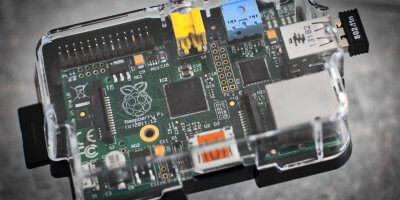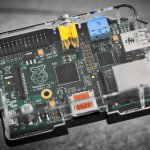
NB-IoT transforms modern communities and businesses | Source: Pixabay
Connected cows, leased parking and other ways China uses Mobile IoT
Mobile IoT refers to low power wide area (LPWA) 3GPP standardized secure operator managed IoT networks in licensed spectrum, according to the GSM Association (GSMA).
In particular, LPWA networks designed for IoT applications that are low cost, use low data rates, require long battery lives and often operate in remote and hard to reach locations – which makes it exciting for companies exploring IoT for business and consumer-facing solutions.
The GSMA, in a new publication, The Mobile Internet of Things Case Study – Greater China, compiled a set of use cases and examples of how companies in China were developing Mobile IoT solutions to benefit citizens.
Some of the more interesting ones are simplified and reproduced below. Watch and learn?
China Mobile Electric Smart Metering
Smart meters have been deployed by many utilities around the world.
With the technology available to smart meter manufacturers and utility providers improving rapidly over the past few years, there is an opportunity to refresh implementations or add new, more efficient technology to a rollout.
China Mobile Automated Meter Reading (AMR) service for electric utilities, in this prototype, consisted of an NB-IoT connected smart meter and the cloud-based OneNET management and application development platform.
The AMR service is designed for deployment in utilities, industrial parks, and intelligent buildings.
The solution optimizes the meter reading process and enables accurate billing for electricity consumption, which has been an issue in some Chinese markets.
It has proven that NB-IoT technology is a very good fit to the demands of China Mobile’s AMR solution and wider smart metering connectivity.
It offers a high quality of service, essential for the operation of critical national infrastructure such as smart meters and grids.
The solution also helps provide a wider network coverage to connect more meters in hard to reach locations.
Finally, it simplifies device management and integration into cloud management platforms.
Recently, Singapore also announced that it has been experimenting with AMR technology to help the island nation save water.
As part of the country's Smart Nation push, Singapore's national water agency PUB is exploring an island-wide roll-out of an automated meter reading system, to encourage #WaterConservation. #SmartWater #SmartCities https://t.co/Zd4ulZl1zs pic.twitter.com/v42pxiaX4t
— Preeya Selvarajah (@PreeyaRajah) March 6, 2018
China Telecom and Ofo Shared Bicycle
Ofo promotes the sharing economy and offers bicycles for hire by users who have installed the Ofo app.
As such, Ofo needs to deploy network technologies which are simple to implement, offer a good quality of service, and do not affect the user experience of hiring or using Ofo bikes.
So far, Ofo has been using a GPRS modem in their bikes to allow for the bicycles’ locks to be opened when a user makes a request on the app.
Unfortunately, this has created a few issues for Ofo, such as having to adapt their bikes to recharge the modem’s battery whilst the user cycles, forcing users to have to wait up to 25 seconds for the lock to open, and poor connectivity leading to failure to open the locks, all of which adds cost and complexity to their operation.
This NB-IoT deployment for Ofo from China Telecom and Huawei has shown that there are significant benefits for Ofo.
The new solution helps improve the customer experience and reduce their operational and maintenance costs.
NB-IoT is a clear contender to connect the many millions of dockless hire bikes that Ofo is deploying around the world.
Being a global network solution, using NB-IoT means Ofo can build a single version of their bicycle which will be able to connect to a local network anywhere that they want to operate.
NB-IoT this gives Ofo the opportunity to focus on improving their service and offering new, innovative services to their users.
#startup Chinese bike-sharing startup Ofo raises record $866m in latest funding round https://t.co/faNlpZfp3s #china #entrepreneur pic.twitter.com/15M1PPHTfb
— startupcrunch (@startupcrunch) March 20, 2018
Chunghwa Telecom Smart Parking
Parking in Taipei is at a premium, with strict parking controls that are enforced by the city with heavy fines for illegal parking.
In this environment, it is common for residents to rent out their personal parking spaces to commuters and visitors through apps from a number of different providers.
To ensure that only authorized vehicles park in these spaces, Chunghwa Telecom has developed an NB-IoT powered smart lock that can be used to prevent unauthorized parking.
The lock is bolted to the floor and can be raised or lowered remotely. Chunghwa Telecom is aiming to create a new market with the smart lock, as limited parking resources across Taipei can be utilized more effectively to meet growing demands for parking with the use of this technology.
The Chunghwa Telecom and USPACE smart parking service is an advanced demonstration of the suitability of NB-IoT for smart city solutions.
USPACE can offer a unique proposition into the Taiwanese market that has been enabled by NB-IoT, and the devices that have been deployed offer a long lifespan, minimal maintenance, and a high quality of service.
NB-IoT coverage in place today across Taipei means that Chunghwa Telecom and USPACE are able to expand their smart parking service quickly and open up many new parking spaces to commuters and visitors to the city.
The reliability and high quality of NB-IoT communications allows partners to focus on their service, and not on maintaining and resolving communications network issues.
? USPACE-駕駛版上線啦? 從現在起,您可以「預 約 車 位」!那是什麼意思?代表您不用【找車位?】+【排隊? ? ?】+【取票??? 】會議不再底累??,約會不在被念?現在只要下載USPACE【駕駛版App】?即可馬上預約您的專屬車位 ?#我絕對不會說免費停車優惠藏在一樓#我也不會說USPACE車位最便宜#我只能說停車神器好用到不行#整個台北市都是你的私人車位—————————————-⏬ 立即下載專屬車位 ⏬? http://download.uspace.com.tw/? 加入USPACE:http://www.uspace.city/
Posted by Uspace 共享車位•收入加倍 on Monday, September 18, 2017
China Telecom Connected Cow
In China, most dairy farms rely on manual observation to find oestrum, which is time and labour consuming (often at midnight) with a high rate of omission. As a result, dairies find it difficult to raise reproduction rate and milk output.
Therefore, oestrus detection is a key link with direct influence on the profits of dairy farms.
For instance, the milk output of one cow is 11.8 tons each year in Israel, while it is only 2.5 tons in China, much lower than that of developed nations – and the low detection rate of oestrus is a critical reason.
The Internet of Cows (IoC) is a viable solution to the problem and a big innovation of China Telecom.
China Telecom and Huawei have conducted cooperation in a dairy farm with over 50,000 cows in Yinchuan city.
In addition to the revenue from milk, calves are also an important source of income.
If the mating time is right in, more than 3000 calves can be born each year. The sensor on the neck of each cow can measure its body temperature to ensure its safety while detecting oestrum for timely mating.
China Telecom can gain millions of RMB by selling such connection and equipment enabled by NB-IoT. The solution can additionally generate sales of sensors and bring about 2.5 million RMB in profits.
The results also show that such IT and ICT solution can be applied in various industries.
While those are just a few, there are more examples and case studies packed into GSMA’s report.
Since the goal of the association is to boost interest in the development of Mobile IoT devices, the GSMA has been collaborating with several companies and countries to help them understand the potential of the NB-IoT network.
If you’re interested in developing your own connect products using Mobile IoT, here is a video GSMA produced recently that might be a good starting point for you:
READ MORE
- The criticality of endpoint management in cybersecurity and operations
- Ethical AI: The renewed importance of safeguarding data and customer privacy in Generative AI applications
- How Japan balances AI-driven opportunities with cybersecurity needs
- Deploying SASE: Benchmarking your approach
- Insurance everywhere all at once: the digital transformation of the APAC insurance industry




